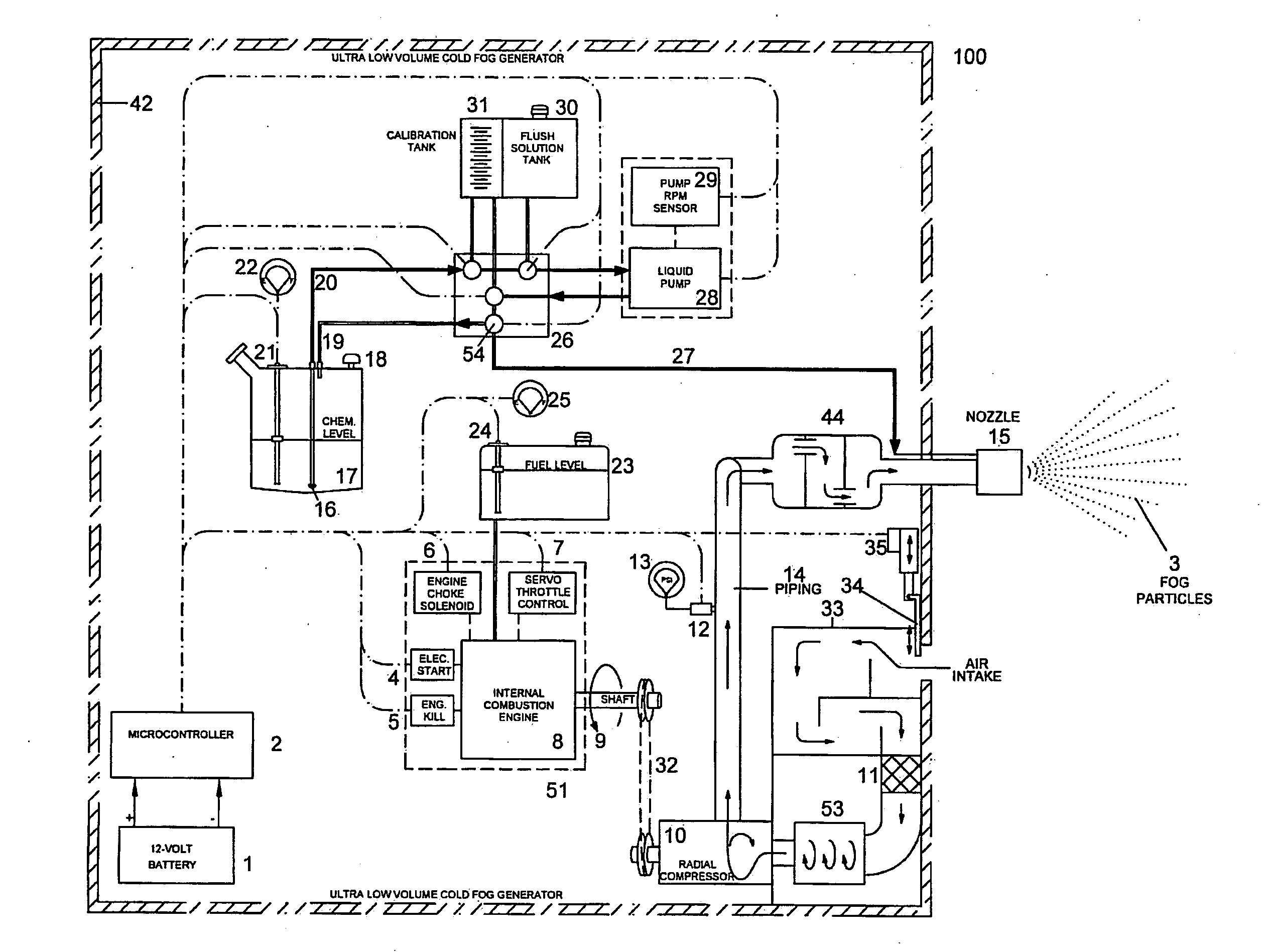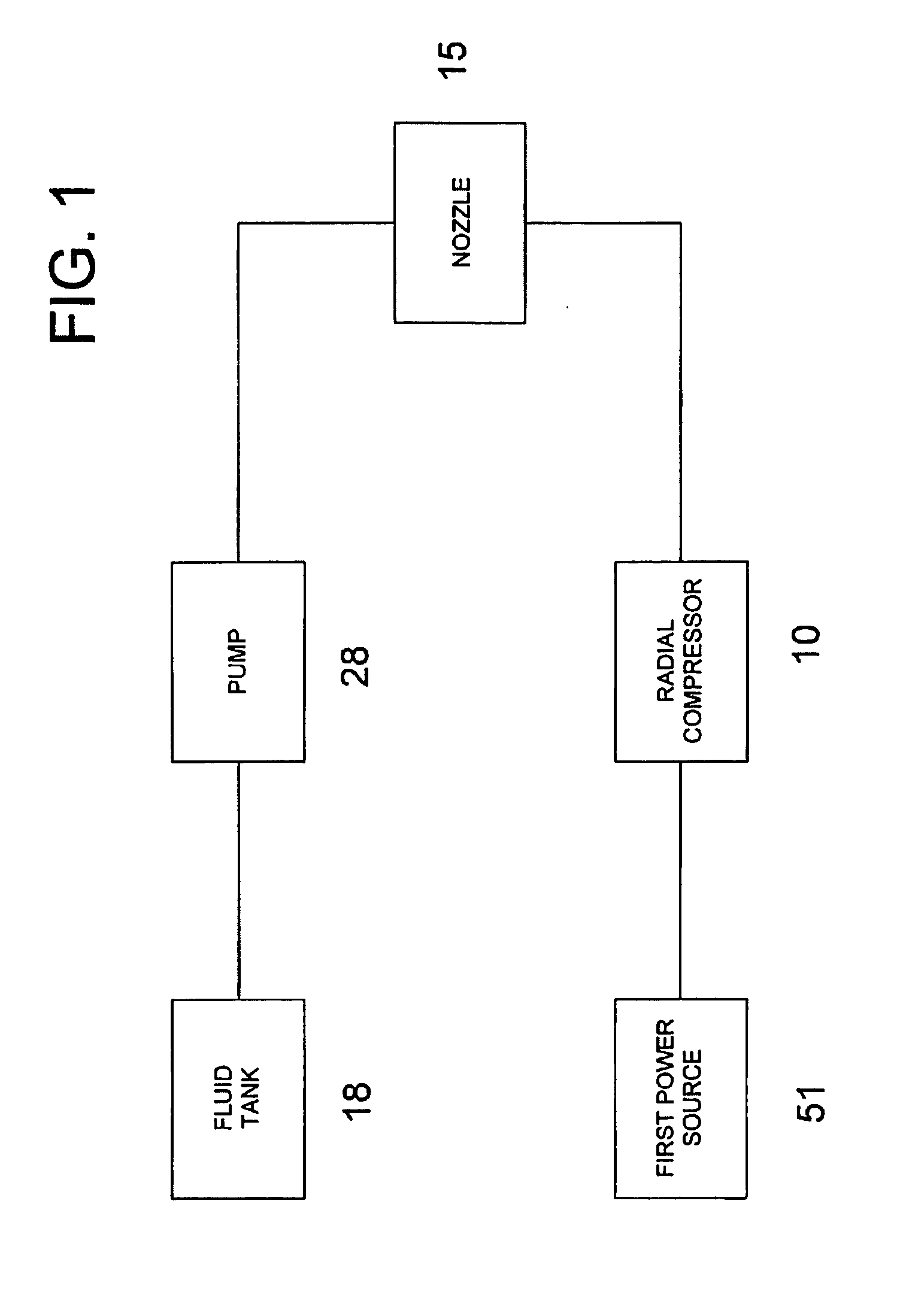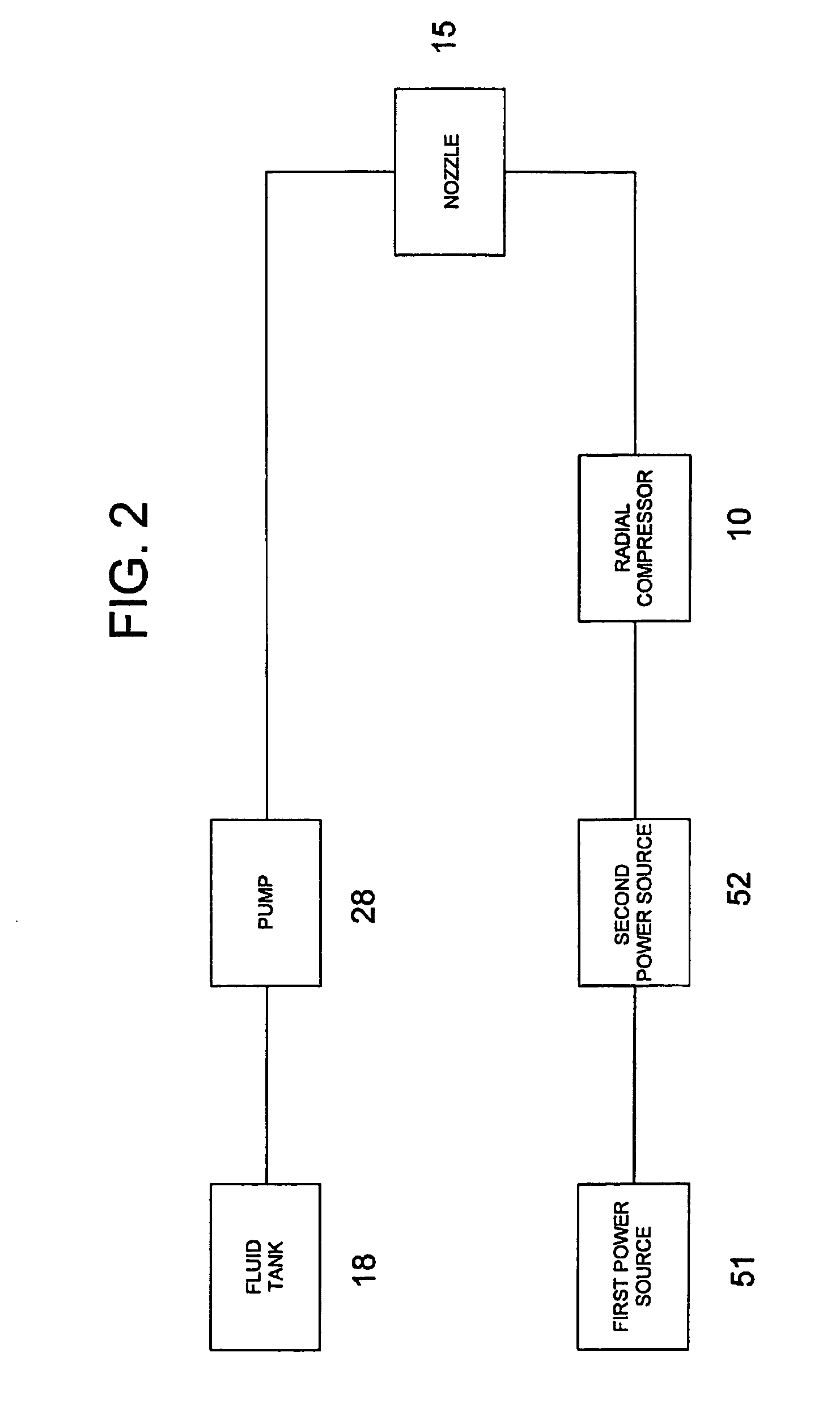Ultra low volume fluid delivery system using a centrifugal radial compressor and method thereof
a technology of centrifugal radial compressor and low-volume fluid, which is applied in the direction of liquid fuel engine, positive-displacement liquid engine, separation process, etc., can solve the problems of increased fuel cost and expenses, dangerous spraying conditions, and increased costs, so as to reduce contact and moving parts, energy saving, and efficient conversion
- Summary
- Abstract
- Description
- Claims
- Application Information
AI Technical Summary
Benefits of technology
Problems solved by technology
Method used
Image
Examples
Embodiment Construction
[0020]FIG. 1 depicts one embodiment of the fluid delivery system. A first power source 51 provides power to operate a radial compressor 10. The radial compressor 10 directs air flow to a nozzle 15 where it combines with fluid from the fluid tank 18 pumped to the nozzle 15 by a fluid pump 28.
[0021]FIG. 2 depicts one embodiment of the fluid delivery system. The first power source 51 operates a second power source 52. The second power source 52 provides a means for torque-speed conversion. This can be accomplished by using, among others, a transmission, gearing reduction / increase, or using different size pulleys on the output shaft of the first power source and input shaft of the radial compressor. Depending on the specifications of the first power source 51 and the radial compressor 10, the second power source 52 can reduce the output RPM from the first power source 51 to a more forceful output to the radial compressor 10, or the second power source 52 can increase the output RPM from...
PUM
| Property | Measurement | Unit |
|---|---|---|
| Pressure | aaaaa | aaaaa |
| Power | aaaaa | aaaaa |
| Flow rate | aaaaa | aaaaa |
Abstract
Description
Claims
Application Information
 Login to View More
Login to View More - R&D
- Intellectual Property
- Life Sciences
- Materials
- Tech Scout
- Unparalleled Data Quality
- Higher Quality Content
- 60% Fewer Hallucinations
Browse by: Latest US Patents, China's latest patents, Technical Efficacy Thesaurus, Application Domain, Technology Topic, Popular Technical Reports.
© 2025 PatSnap. All rights reserved.Legal|Privacy policy|Modern Slavery Act Transparency Statement|Sitemap|About US| Contact US: help@patsnap.com



